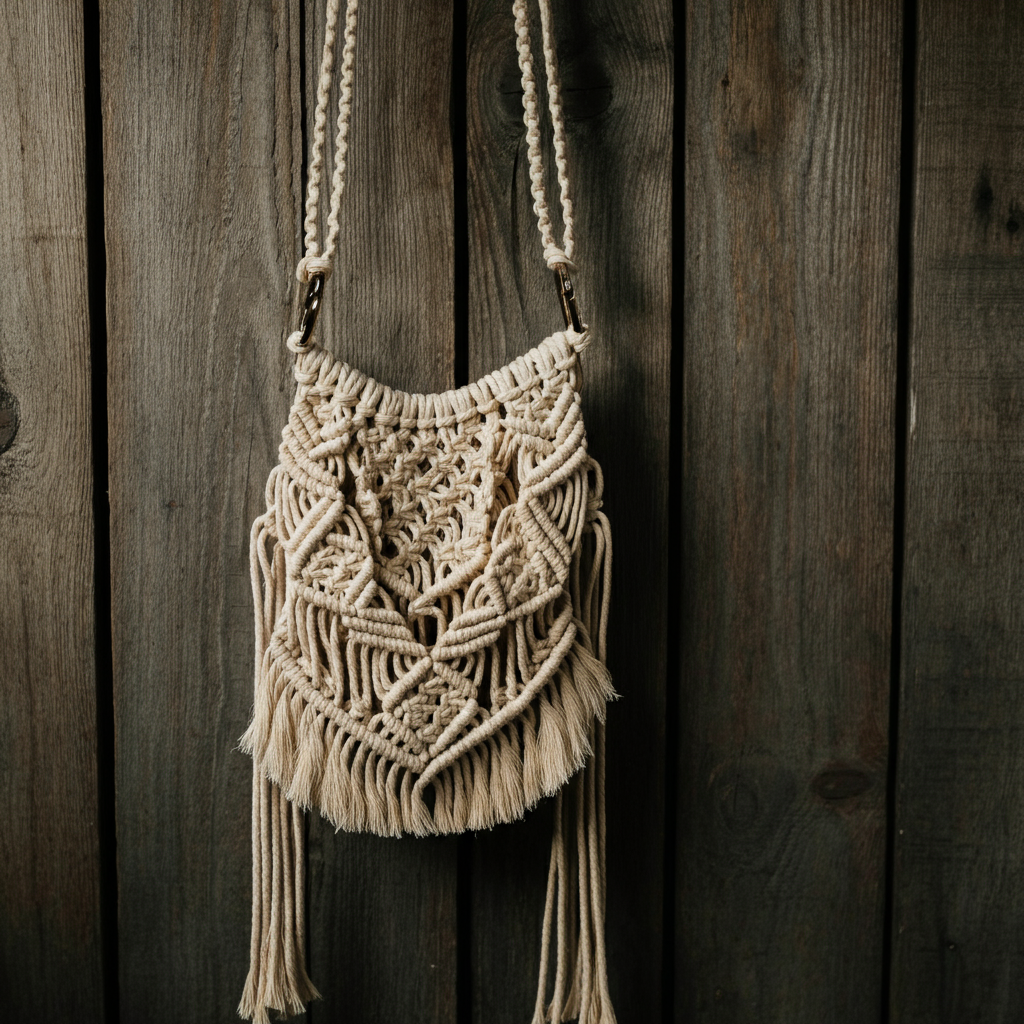The jewelry industry gleams with elegance, sophistication, and craftsmanship. In a niche where emotion and tradition intertwine with the allure of precious metals and stones, branding is not just about images and slogans but about creating a legacy. For jewelry designers and aspirants, understanding the quintessence of branding is crucial to establishing a name that resonates and remains. This in-depth guide will illuminate the facets of branding strategies tailored for the intricacies of the jewelry business, surfacing the best practices for carving a unique and lasting impression.
The Gem of Strategic Branding
Branding is the promise that you make to your customers. It encompasses the entire sensory experience of your product, from the visual to the emotional. And in the jewelry sector, this is amplified—a diamond never really sells itself, it’s the dream wrapped around it. Successful jewelry brands know the art of creating a connective tissue between their designs and the spirit of the buyer. Here we dive into the mosaic of elements that form a robust brand for the jewelry industry.
Fundamentals of Branding for Jewelry
Understanding the basics of branding is akin to crafting a fine piece of jewelry—it requires attention to detail, creativity, and consistency. The core of branding lies in the unique story your brand tells, the compelling values it communicates, and the memorable experiences it promises. Each piece of jewelry should embody not only the artistry and quality your brand stands for but also the emotions and aspirations of its wearer. A coherent brand narrative, distinctive logo, carefully selected color palette, and a consistent theme across all marketing materials form the bedrock of branding. Encapsulating your brand's essence through these elements facilitates a strong, recognizable identity that resonates with consumers, fostering loyalty and trust over time.
Understanding Your Target Audience
Before a jeweler begins crafting their masterpiece, it is crucial to have a deep understanding of the individuals they are designing for. This goes beyond mere demographic profiling; it involves delving into their desires and dreams.
Crafting Customer Avatars
Creating detailed personas can provide valuable insights into the preferences, lifestyle, and purchasing behavior of your target customers. Are you designing for the urban sophisticate, the boho spirit, or the traditional matriarch? Developing personas that go beyond surface-level characteristics is essential, taking into account their aspirations and emotional triggers.
Conducting Market Research
In a highly competitive landscape, knowledge truly is power. Market research plays a pivotal role in uncovering trends, competitor strengths and weaknesses, and market gaps that your team can fill. Surveys, interviews, and social media mining can provide invaluable insights that not only shape jewelry designs but also define the brand persona.
Understanding your target audience is the foundation of any successful jewelry business. By knowing precisely whom you are designing for, you can create pieces that resonate deeply with your customers, forging a strong connection and fostering brand loyalty.
To begin understanding your target audience, it is vital to develop customer avatars or personas. These personas go beyond basic demographics and delve into the preferences, lifestyle choices, and purchasing behaviors of your ideal customers. Are you targeting the urban sophisticate who appreciates sleek and modern designs? Or perhaps the boho spirit who adores eclectic and unconventional jewelry? Maybe your focus is on the traditional matriarch who values timeless elegance. By creating detailed personas, you can gain a comprehensive understanding of your target audience, allowing you to tailor your designs to their unique preferences and desires.
Market research is another essential component of understanding your target audience. In a competitive industry, staying ahead of trends and knowing your competitors' strengths and weaknesses is crucial. Market research can help you uncover emerging trends, identify gaps in the market that your brand can fill, and gain insights into your customers' purchasing behaviors. Conducting surveys, interviews, and social media analysis can provide valuable data and insights that allow you to refine your designs and create a brand persona that resonates with your target audience.
By combining a deep understanding of your target audience with market research, you can create jewelry pieces that not only meet their needs but also exceed their expectations. This customer-centric approach will not only drive sales but also build a loyal customer base who appreciates your brand's unique offerings.
In conclusion, understanding your target audience is essential for any jeweler looking to succeed in a competitive market. By creating detailed customer avatars and conducting thorough market research, you can gain valuable insights that inform your jewelry designs and brand persona. This customer-centric approach will enable you to create pieces that resonate deeply with your customers, fostering brand loyalty and driving business growth.
Defining Your Brand Identity
Your brand identity is the essence of your company, a distillation that your customers can sense and feel. It encompasses the why, the mission of your brand, and the values you stand for.
Crafting a Unique Brand Story
Every brand has a story, and in jewelry, it often begins with a passion for artistry and a particular material. Share the journey of how your brand came to be, the inspiration behind signature collections, and the craftsmanship that goes into each piece. A compelling narrative captivates the audience, fostering an emotional connection that goes beyond the product.
Establishing Core Brand Values
What does your brand represent? Quality, sustainability, innovation? Cementing these values in the narrative and demonstrating them through every touchpoint reinforces the trust and respect of your audience. Integrity in your brand values translates into the credibility of your products and services.
Crafting a Memorable Logo and Visual Identity
Your logo and visual elements are the face of your brand, the first impression that speaks volumes about who you are. They should be reflective of your brand identity and resonate with your audience.
When it comes to designing, it's essential to understand that a logo is more than just a symbol. It's a powerful representation that carries the weight of your brand message. Whether you opt for a classic, modern, extravagant, or minimalist design, it should align with your brand narrative and stand out in a crowded marketplace. The key is to create a logo that is easily recognizable and distinct, leaving a lasting impression on your audience. Remember, a well-crafted logo can be the cornerstone of your brand identity and make a significant impact on how your business is perceived.
Choosing Colors, Fonts, and Visual Elements
The choice of colors, fonts, and design elements can evoke certain feelings and associations. In jewelry branding, colors often mimic the tones and hues of precious metals and stones, and fonts may echo the elegance of script. Your designs should be consistent across all platforms, from your website to your packaging.
Developing a Consistent Brand Voice
What you say is as important as how you say it. Your brand voice should be consistent and reflect your brand personality.
Defining the Tone and Style
Are you formal or friendly, aspirational or relatable? Determine the tone that best aligns with your brand persona. The style should also consider the level of knowledge or sophistication of your target audience. A luxury brand may use more sophisticated language, while a contemporary brand might opt for a casual, conversational tone.
Creating Brand Messaging Guidelines
Consistency is key in brand messaging. Develop guidelines that outline the language to be used, the key selling points, and the storytelling techniques to maintain a cohesive voice across all communication channels, be it social media, product descriptions, or advertising campaigns.
Building an Engaging Online Presence
In today's digital age, your online presence serves as your flagship store. It's where customers explore your brand and make decisions. An engaging presence must be both visually appealing and user-friendly.
Crafting a Stunning Website
Your website is the virtual showroom of your brand. It should reflect the quality and aesthetic of your jewelry, offering a seamless browsing experience. High-quality images, clear navigation, and a secure payment gateway are non-negotiable elements.
Leveraging Social Media Platforms for Business Growth
In today's digital landscape, social media platforms provide invaluable opportunities to connect with diverse audiences and foster meaningful engagement. Each platform offers a distinctive set of features and user demographics, allowing businesses to tailor their strategies for maximum impact.
For instance, Instagram's visually-driven interface creates an ideal platform for jewelry brands to showcase their exquisite products. Through stunning imagery and creative storytelling, businesses can captivate their target audience and cultivate a strong brand presence.
On the other hand, LinkedIn presents a unique opportunity for B2B networking and professional connections. With its emphasis on industry expertise and professional achievements, businesses can leverage this platform to forge valuable partnerships, establish thought leadership, and expand their network of like-minded professionals.
Regardless of the chosen platform, it is crucial to maintain consistency in brand messaging and identity. By aligning content with the brand's values and personality, businesses can build credibility and trust among their followers. Additionally, prompt and personalized interactions with customers further enhance the brand's reputation and foster a positive online community.
In conclusion, by strategically leveraging social media platforms, businesses can propel their growth and establish a strong online presence. By understanding the unique offerings of each platform and tailoring their approach accordingly, businesses can effectively connect with their target audience and thrive in the digital age.
Creating Compelling Brand Collateral
All physical materials that represent your brand—from your business cards to your product packaging—are brand collateral. They are an extension of your brand identity that your customers can hold and interact with.
Designing Product Packaging
For jewelry, packaging is part of the experience. It should be as elegant and well-crafted as the pieces it shelters. Even the simplest designs can be transformed into a statement with the right materials, colors, and branding.
Developing Marketing Materials and Catalogs
Your brand collateral should tell a cohesive story and be of the same quality as your wholesale jewelry. High-resolution images, premium paper, and innovative design elements can make your marketing materials and catalogs stand out, becoming desirable objects in their own right.
Establishing Brand Partnerships and Collaborations
Strategic partnerships and collaborations amplify the reach and credibility of your brand.
Identifying Alliances Within the Industry
Collaborating with complementary brands can introduce your jewelry to new audiences. Whether it's a joint collection, a co-hosted event, or a shared content strategy, aligning with the right partner can enhance your brand in a meaningful way.
Collaborating with Influencers
Influencers bring their own audience to the table. Partner with those who share the values and aesthetic of your brand for an authentic and impactful collaboration that can generate a buzz and drive sales.
Providing Exceptional Customer Experience
The hallmark of any good brand is the experience it provides to its customers. Exceptional experiences create loyal customers and brand advocates.
Creating a Seamless Purchasing Journey
From the first click to the delivered package, every step should be effortless and delightful. A customer-friendly return policy, secure transactions, and after-sales follow-up can turn a first-time buyer into a lifelong customer.
Offering Personalized and Attentive Customer Service
In the jewelry industry, personalization is expected. However, it extends beyond engraving and sizing. Know your customers, remember their preferences, and provide recommendations that show you understand their unique tastes and the importance of their purchase.
Measuring and Evolving Your Brand Strategy
Branding is an ongoing process. Your strategy should evolve with your business, the market, and the trends.
Tracking Brand Performance Metrics
Monitor the performance of your brand across various platforms and sales channels. Conversion rates, customer satisfaction scores, and social media engagement can provide valuable insights into what's working and what's not.
Making Necessary Adjustments and Improvements
Use the data to make informed decisions. It might be time for a rebrand, or perhaps just a new line that targets a different demographic. Iterate on your brand strategy to stay relevant and adaptive to market changes.
Example
An excellent example of effective branding is the iconic luxury retailer Tiffany & Co. Their distinctive robin's egg blue—officially recognized as 'Tiffany Blue'—is instantly identifiable and has become synonymous with the brand. This particular shade is used across their packaging, marketing, and store décor, creating a unified and exclusive Tiffany experience. The brand has effectively trademarked this color, adding to their cachet of luxury and uniqueness. Coupled with their elegant typography and sophisticated imagery, Tiffany & Co. has established a brand that’s both timeless and expressive of its heritage and quality craftsmanship. As a result, the brand has become a household name with a cult following and continues to thrive in the competitive luxury market. This is a prime example of how creating and maintaining a strong brand identity can elevate a business and create an enduring legacy. So, it's essential for jewelry brands to invest time and effort into developing their brand strategy, keeping in mind the target audience
Conclusion: The Brilliance of Effective Branding
For jewelry brands, effective branding is not just a marketing strategy — it is the foundation upon which legends are built. This comprehensive guide offers a roadmap to create a brand that not only captures the essence of your designs but also engrains a lasting impression in the hearts and minds of your audience. By understanding the soul of your brand, resonating with your customers, and continually evolving, your jewelry brand can shine in a competitive industry, creating a legacy that withstands time and trends.




